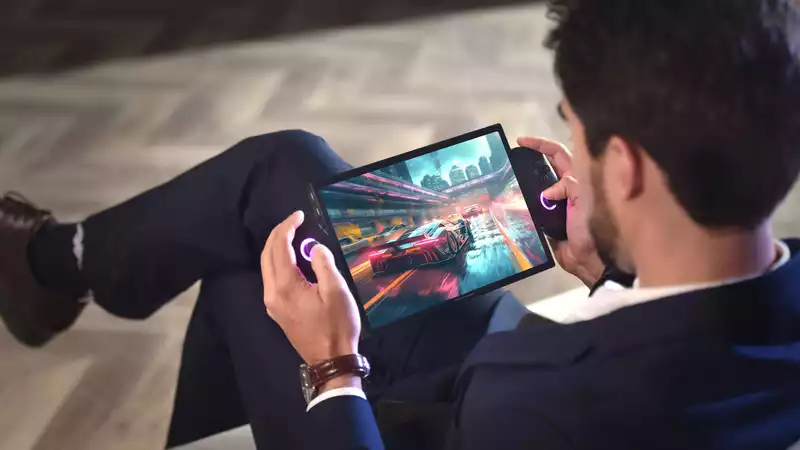OneXPlayer is hardly a novice when it comes to portable PCs, initially producing handheld devices and tablets for over six years under the name One-Notebook. Now, the company has added the X1 with Intel's Meteor Lake CPU to its portfolio, making it the latest range-topper in the OneXPlayer OneXPlorer series of handheld PCs. This is the X1, the latest range-topper in the OneXPlayer OneXPlorer series of handheld PCs. It's not the smallest thing you've ever seen, but its feature set may help it stand out from the very busy crowd of PC gaming-on-the-go machines.
OneXPlayer first hinted at the X1 project last December, but with an official crowdsourced fundraising campaign underway, I expected more details. This is because retail pricing and full specs are still a mystery.
What we do know, however, is that all processing duties will be handled by the Core Ultra 7 155H. This is one of Intel's first Meteor Lake-based chips, with six P-cores, ten E-cores, and two low-power E-cores (just to handle background tasks), for a total of 22 threads.
With a base power of 28W and a maximum limit of 115W, the 155H could reach 4.8GHz on the P-cores and 3.8GHz on the main E-cores, assuming OneXPlayer is not using lower power limits on the X1.
The integrated GPU uses Intel's Alchemist architecture with eight Xe cores (1,024 shaders) and a boost clock of 2.25 GHz, but again the X1 may be launched with a lower clock. The processor for most handheld PCs is an AMD Ryzen 7 7840U, whose GPU is a RDNA 3-based Radeon 780M. This GPU has 768 shaders but a much higher boost clock of 2.7 GHz.
Last year, Jacob did some hands-on gaming testing with a Core Ultra 7 165H laptop and had no problems at all with 1080p games, and even more so with games that support Intel's XeSS upscaling algorithm. The GPU of this processor is exactly the same as the 155H's, so the X1 should be as good as the Asus ROG Ally or Ayaneo Air 1S, for example.
The display is an 11" 120Hz LTPS screen with a resolution of 2560 x 1600 (16:10 aspect ratio). Peak brightness is claimed to be 540 nits and sRGB color gamut is 138%, which should be very easy to see. However, the pixel count of this panel is almost double that of a standard 16:9 1080p display, and the GPU may struggle with the default resolution even with upscaling.
RAM is LPDDR5X-7467, which is nice and fast and provides a lot of bandwidth. The amount installed has not yet been stated, but the base model will have 16 GB, and 32 GB will be available as an option.
The same is true for storage, which we know is PCIe 4.0 NVMe, but the number and capacity of M.2 slots available for purchase is not stated. Nevertheless, there is a funny typo in the press release where OneXPlayer lists the maximum capacity of the X1 as 64 GB.
Battery capacity will be a reasonable 65 Wh: nothing special, but given the size of the screen, weight was probably a consideration; a 100 W GaN charger is included, capable of charging 50% in 40 minutes.
According to the OneXPlayer release, the X1 can handle 3 hours of gaming on a single charge, so you will probably be testing the limits of the charger quite often.
Whereas most handheld PCs are designed for only one role, the X1 is a more versatile device. The side controller is removable and can be combined to make a handy Nintendo Switch-like gamepad, an optional keyboard is available, and the display can be turned into a small notebook.
In addition, it features RGB lighting, four Thunderbolt and USB ports, an aluminum enclosure, and a total weight of just under 780 g. The X1's biggest competitor is the OneXPlayer, which is powered by a Ryzen 7 7840U, has an 8.4-inch IPS screen, and a removable controller, would be the OneXPlayer 2 Pro unit. The 32GB RAM/1TB SSD version will retail for $1,299, and the X1 will be more expensive than that.
Whether the OneXPlayer will be a new success or a one-year replacement depends on exactly how much it costs.
.

Comments